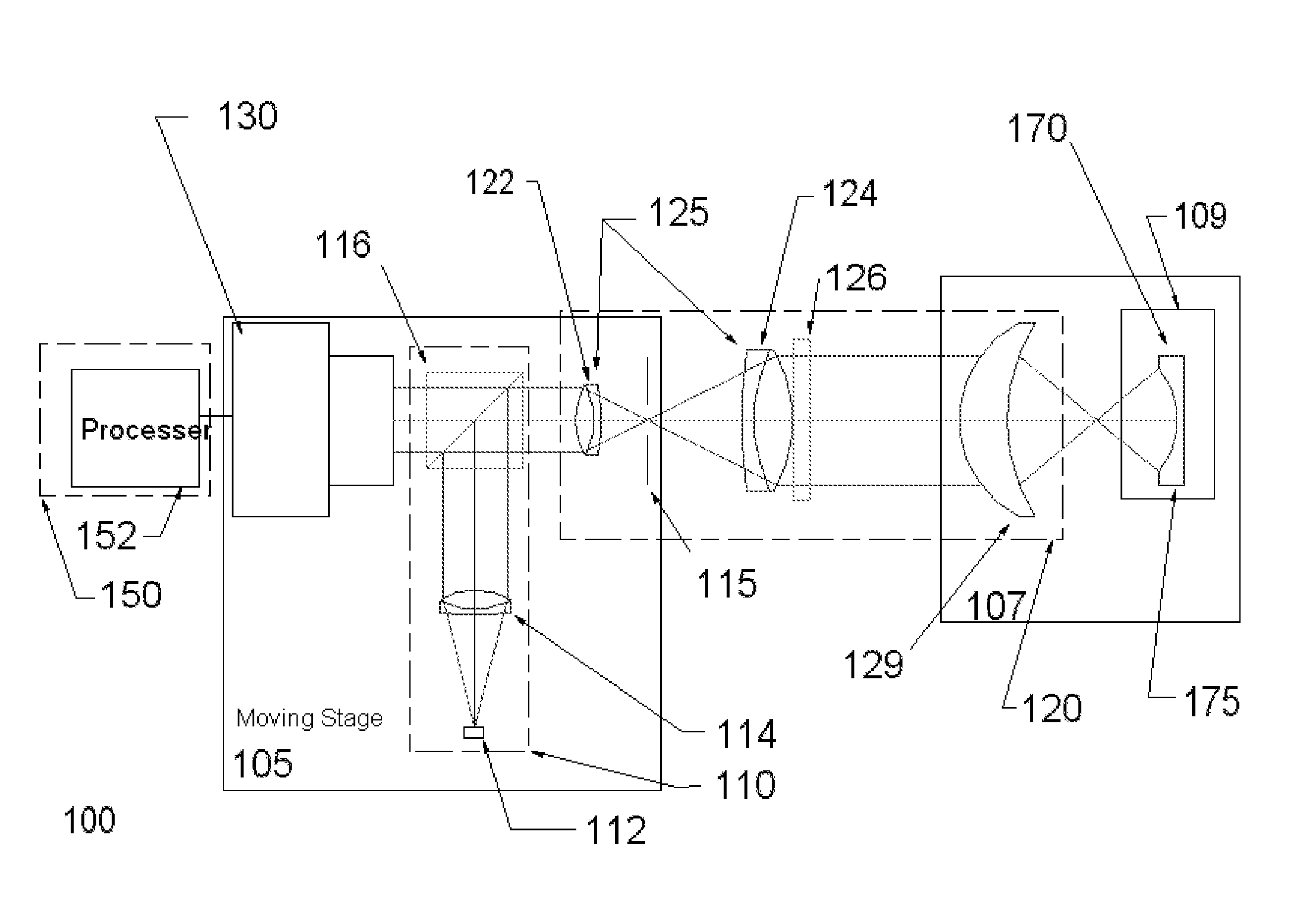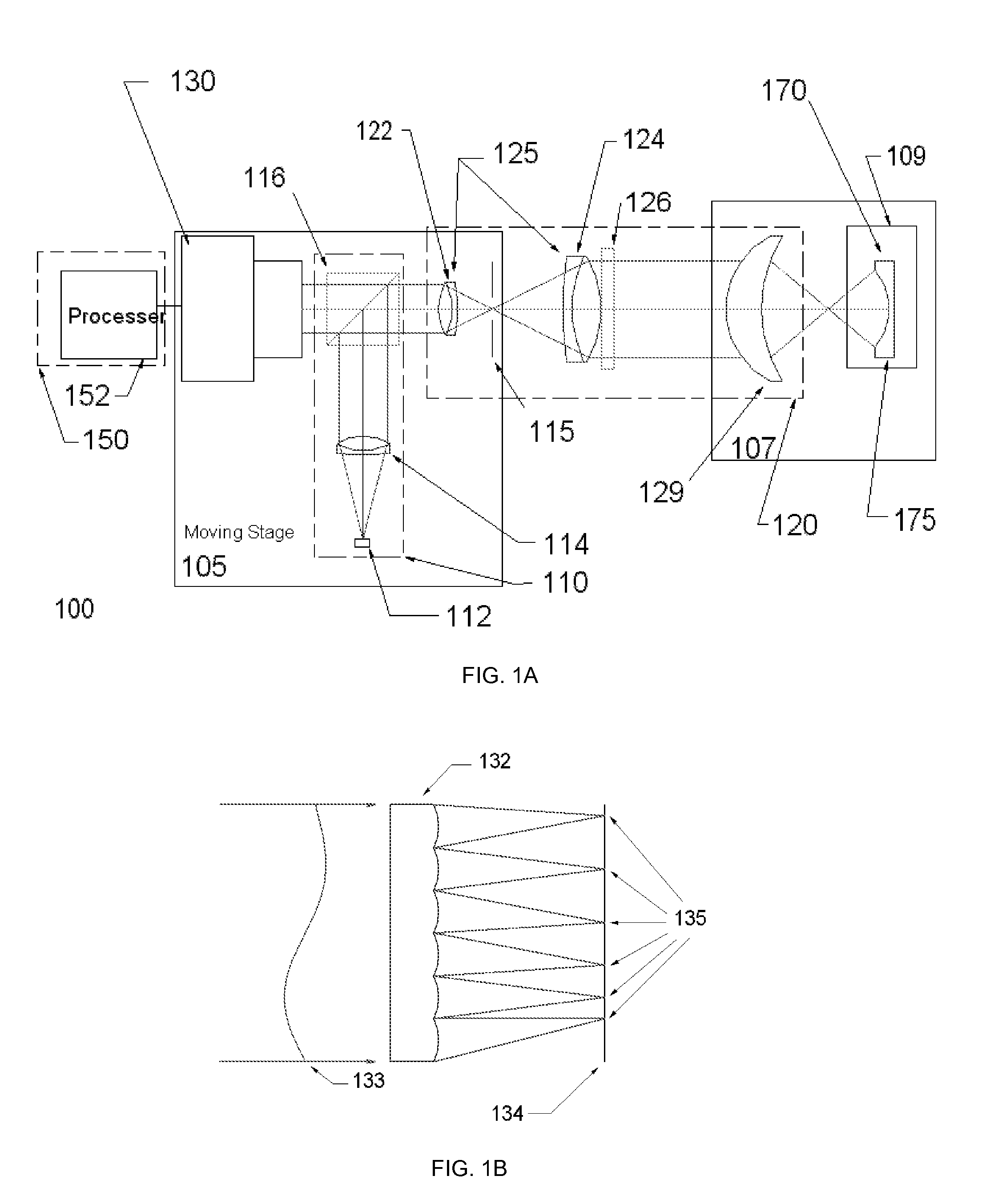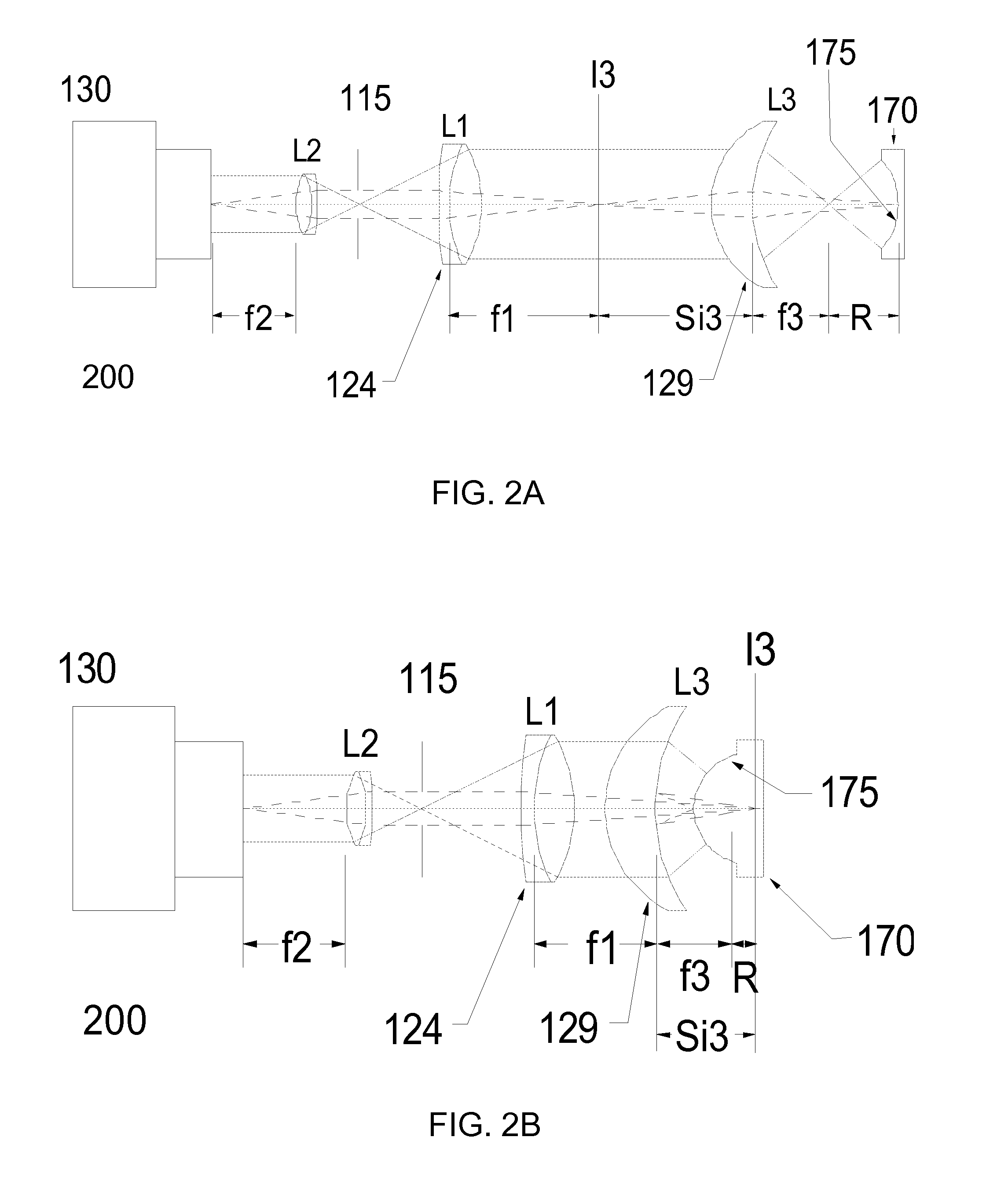System and method of measuring and mapping three dimensional structures
- Summary
- Abstract
- Description
- Claims
- Application Information
AI Technical Summary
Benefits of technology
Problems solved by technology
Method used
Image
Examples
Embodiment Construction
[0048]FIG. 1 shows a functional block diagram of one embodiment of a system 100 for measuring and mapping three-dimensional surfaces of spherical and aspherical objects.
[0049] The system 100 includes: a projection system 110 comprising a light source 112, a collimating lens 114, and a polarizing beam splitter 116; an optical imaging system 120 comprising lens pair 122 and 124 (operating together as a telescope 125), dynamic-range-limiting aperture (RLA) 115, λ / 4 waveplate 126, and reformatting lens 129; a wavefront sensor 130; and a data analysis system 150 including a processor 152. Beneficially, the system also includes one or more movable stages—in particular the system 100 includes three movable stages 105, 107, and 109—on each of which one or more components may be mounted. The purposes and function of the movable stages will be explained in further detail below.
[0050] Beneficially, in one embodiment, the wavefront sensor 130 is a Shack-Hartmann wavefront sensor, an example o...
PUM
 Login to View More
Login to View More Abstract
Description
Claims
Application Information
 Login to View More
Login to View More - R&D
- Intellectual Property
- Life Sciences
- Materials
- Tech Scout
- Unparalleled Data Quality
- Higher Quality Content
- 60% Fewer Hallucinations
Browse by: Latest US Patents, China's latest patents, Technical Efficacy Thesaurus, Application Domain, Technology Topic, Popular Technical Reports.
© 2025 PatSnap. All rights reserved.Legal|Privacy policy|Modern Slavery Act Transparency Statement|Sitemap|About US| Contact US: help@patsnap.com



